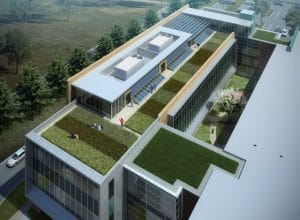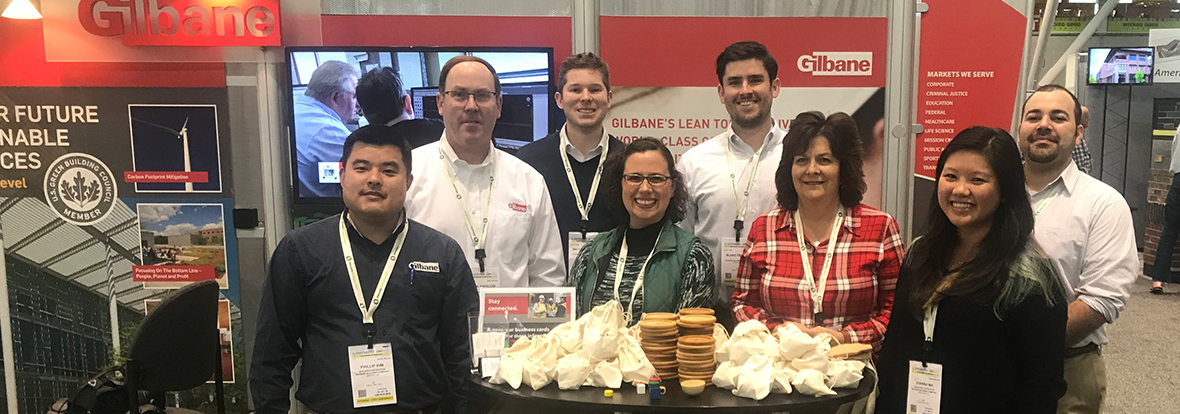Trends
The sustainable landscape includes exceptionally high-performance, high-quality projects that can be achieved on budget and on schedule through thoughtful design with attention to detail. Wish lists for sustainable features typically include glazing systems, enhanced insulation, durable and sustainable cladding, cool or green roof systems, and day-lighting throughout the complex to minimize energy usage. Graywater system connected to onsite lavatories and sinks to irrigate landscapes; a solar thermal hot water system and vacuum composting toilets have also been incorporated into projects.
Recently, Gilbane partnered with Google and Green Building & Design Magazine on a special collective impact feature, “The Most Successful Collaboration for Sustainability in the Build Environment” to discuss some of these features.
Net Zero Buildings
 Net zero buildings create enough energy within one year to power the building, removing the requirement for external energy sources. Gilbane has delivered six projects that are net zero ready. Projects designed to net-zero standards include features such as:
Net zero buildings create enough energy within one year to power the building, removing the requirement for external energy sources. Gilbane has delivered six projects that are net zero ready. Projects designed to net-zero standards include features such as:
- Energy production to sustain the building
- Geothermal and demand control ventilation system
- Solar thermal domestic water heating
- Ground water injection through pervious paving system and bio-retention system
- Multi-level lighting controls for maximum energy savings
- LED dimmable lighting
- Optimal building orientation
Certifications
Training is key to building strong teams who support clients creating sustainable buildings: Gilbane supports the United States Green Building Council (USGBC) as a Platinum member and continues to grow our 400+ count of team members that are Green Associated and Leadership in Energy and Environmental Design (LEED®) Accredited Professionals.
In addition to completing several LEED v4 projects, Gilbane has completed several Living Building Challenge Projects https://www.gilbaneco.com/project/california-state-university-associated-students-sustainability-center/
Future
Sustainable construction is a lot more than just filling out the LEED templates.
Our Gilbane Sustainability Council works in partnership with project teams and owners to make sure goals — such as diverting 93 percent of our construction waste — are met.
New initiatives to drive the future of sustainable buildings include researching environmental impacts on construction sites by measuring water, energy usage and air quality.
Be sure to see the Gilbane Building Company video highlight or connect with Adrienne Franklin or Mark Winslow at the Greenbuild International Conference and Expo from November 14-16, 2018 at the McCormick Place in Chicago, IL.
What are your critical success factors for sustainability project success? Share in the comment section below.

